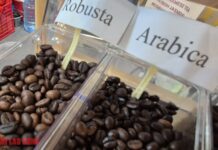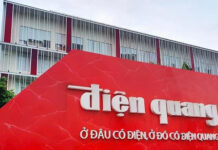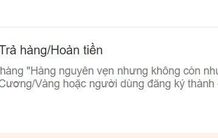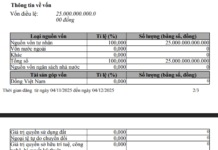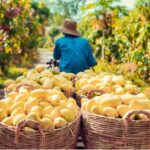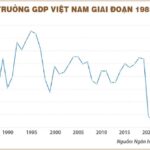The creature that appeared in the rice field, much to Mr. Ho Quang Cua’s surprise, was: Earthworms.
This information was shared by Mr. Ho Quang Cua at the seminar “Promoting the Use of Biological Products in Pest Control for Rice Cultivation Towards Green and Sustainable Rice Production.”
To achieve the presence of earthworms in his ST25 rice field, he prioritized the application of organic fertilizers and biological products consistently over many years.
Recently, after harvesting the summer-autumn rice, he immediately plowed the soil. After 20 days, he planted the rice. 15 days after planting, as the water receded, he discovered a dense population of earthworms in the field. Mr. Cua was amazed, exclaiming, “This is a miracle of nature.”
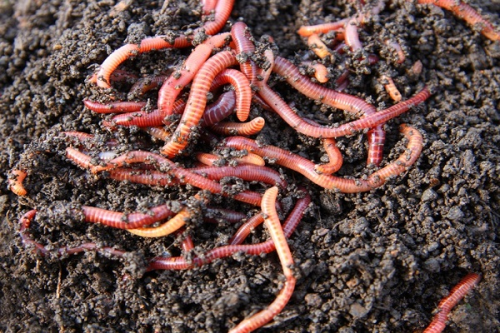
Earthworm (illustrative image).
What does the presence of earthworms signify?
The appearance of earthworms in rice fields is generally a positive indicator of soil health and rice growth. They act as “natural engineers” of the soil, enhancing fertility by breaking down organic matter like straw, rice husks, and decaying leaves into nutrient-rich humus. Earthworm castings provide essential nutrients such as nitrogen, phosphorus, potassium, and trace elements, promoting better nutrient absorption and robust rice growth.
Their burrowing activity aerates the soil, improving drainage and water retention, which helps prevent waterlogging and drought. This fosters a favorable root system development, reduces soil erosion, and minimizes surface crusting. Earthworms also create a habitat for beneficial microorganisms, accelerating organic matter decomposition, suppressing certain soil-borne pathogens, and contributing to a balanced ecosystem.
Additionally, the presence of earthworms serves as an ecological indicator: soil rich in earthworms is typically free from chemical pollution. Conversely, a decline or absence of earthworms may signal nutrient deficiencies or excessive pesticide use. Therefore, maintaining and fostering earthworm populations is crucial for achieving high-yield, sustainable rice cultivation.
How to Encourage Earthworm Presence
To ensure the presence of earthworms in his ST25 rice fields after each harvest, Mr. Cua plows the soil, incorporating rice straw, and applies biological products to accelerate decomposition, creating high-quality humus. This method fosters a conducive environment for beneficial microorganisms at minimal cost.
Experts recommend the following practices to encourage earthworm presence in rice fields:
To promote earthworm populations, create a favorable habitat and provide ample food sources. Here are effective measures:
Supplement Organic Matter: Rice straw, leaves, green manure, and well-decomposed compost serve as primary food sources for earthworms. Evenly distribute and mix these materials into the soil before or after planting to accelerate earthworm growth.
Maintain Soil Moisture and Aeration: Earthworms thrive in moist, well-aerated, and well-drained soil, avoiding waterlogging or hardening. Minimize soil compaction and avoid heavy machinery that could damage earthworm burrows.
Limit Harmful Chemicals: Reduce the use of chemical pesticides, herbicides, and high-dose chemical fertilizers, as these can harm or repel earthworms. Prioritize biological pesticides and organic fertilizers.
Plant Cover Crops or Green Manure: Maintaining vegetation cover reduces water evaporation, preserves soil moisture, and provides a continuous food source for earthworms.
Introduce Earthworms: Purchase earthworm species like Eisenia fetida or Lumbricus rubellus and release them into prepared fields with organic matter to rapidly establish a thriving earthworm population.
Earthworms flourish in well-aerated, moist, organic-rich soil with minimal chemical exposure. Cultivating earthworms not only enhances soil health but also boosts rice yields and environmental sustainability.
Minh Khang
Aan Clean Rice Triumphs as Top 10 Most Trusted ASEAN Brands 2025
On the evening of October 26, 2025, in Malaysia, Gạo Sạch Aan made a proud mark as it was honored to be named among the Top 10 Prestigious Brands in ASEAN (ASEAN Top 10 Brand Award 2025).
AgriS Reschedules Annual General Meeting to Optimize 2025–2030 Strategy Implementation
On October 17, 2025, AgriS (HOSE: SBT) announced a change in the date of its Annual General Meeting of Shareholders for the fiscal year 2024-2025 (AGM). Originally scheduled for October 24, 2025, the meeting will now take place in December 2025.


